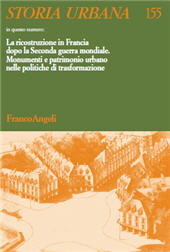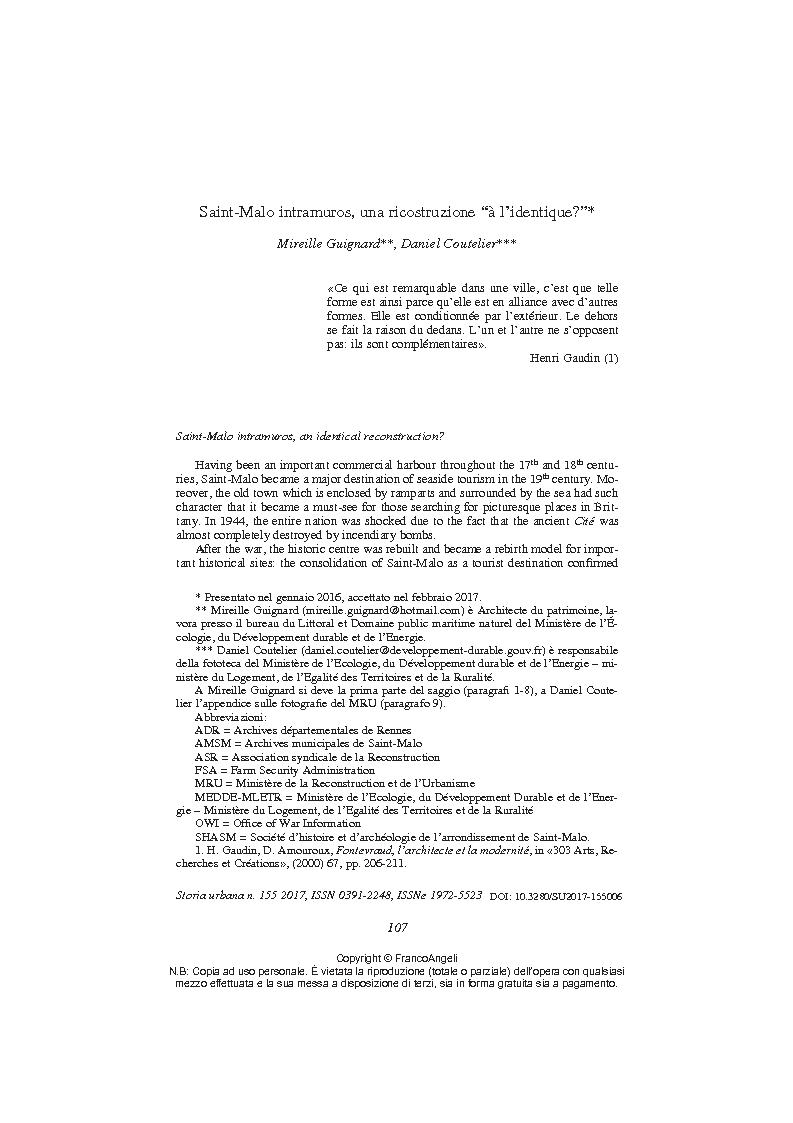Saint-Malo intramuros, una ricostruzione à l'identique?
107-130 p.
Having been an important commercial harbour throughout the 17th and 18th centuries, Saint-Malo became a major destination of seaside tourism in the 19th century. Moreover, the old town which is enclosed by ramparts and surrounded by the sea had such character that it became a must-see for those searching for picturesque places in Brittany. In 1944, the entire nation was shocked due to the fact that the ancient Cité was almost completely destroyed by incendiary bombs. After the war, the historic centre was rebuilt and became a rebirth model for important historical sites: the consolidation of Saint-Malo as a tourist destination confirmed success in the eyes of the public. Still, the reconstruction created a complex site. The few protected monuments were restored and some buildings were rebuilt stone by stone. Nonetheless, most of the smaller buildings were reinvented throughout a long process aimed at restoring the harmonic aspect of the ancient city. Its urban shapes, road layout, building types, volumes, mat
erials and details express a strong need for architectural quality, so that its reconstruction shows the goal of an appropriate modernization in relation to the peculiar historical site and its importance at local and national level. The analysis of the plan and of its implementation allows us to highlight the architectural choices which were carried out. At the same time, it helps to identify the shortcomings of an authenticity which was retrospectively attributed to the entire urban context. [Publishers' text].
Fait partie de
Storia urbana : rivista di studi sulle trasformazioni della città e del territorio in età moderna : 155, 4, 2017-
Articles du même numéro (disponibles individuellement)
-
Informations
Code DOI : 10.3280/SU2017-155006
ISSN: 1972-5523
KEYWORDS
- Saint-Malo, World War II, Identical Reconstruction, Urban Planning, Authenticity



